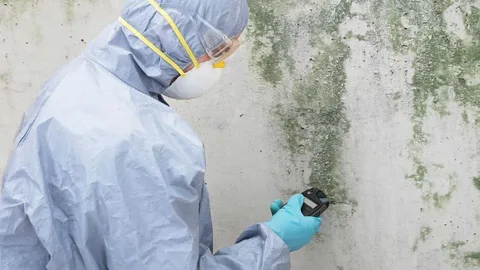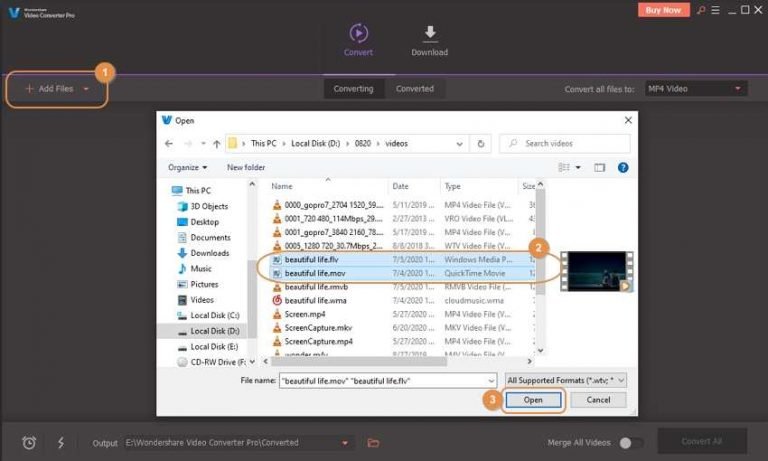Mould is more than just an unsightly annoyance lurking in the corners of your home; it’s a serious health hazard that can affect everyone, from young children to older people. If you’re living in Sydney, you might be surprised to learn how mould thrives in our unique climate. With humidity levels often on the rise, ensuring your home remains a safe space is essential.
The truth is, neglecting Mould Inspection Report Sydney could lead to respiratory issues and other health problems for your family. But fear not! Regular mould inspections offer peace of mind and are crucial for maintaining a healthy environment at home. Let’s dive into why these inspections matter and how a simple report can make all the difference in safeguarding your loved ones’ well-being.
The importance of regular mould inspections in Sydney
Mould growth can be a hidden menace in your home, especially in Sydney’s humid climate. Regular mould inspections are crucial to identify and address potential issues before escalating.
These inspections safeguard your health and protect your property’s structure. If left unchecked, mould can weaken walls, damage ceilings, and ruin furnishings.
The unpredictable nature of mould makes it essential to stay proactive. A routine check every six months allows homeowners to catch early signs of dampness or infestation.
Additionally, regular inspections provide peace of mind. Knowing that your living space is free from harmful spores creates a healthier environment for you and your family.
Investing time into these assessments today leads to long-term benefits tomorrow, ensuring a haven for all who enter your home.
What to expect during a mould inspection
You can expect a thorough examination of your home during a mould inspection. The inspector will likely start with visual assessments in moisture-prone areas, such as basements and bathrooms.
Moisture Detection
The first step in a mould inspection is to determine the source of moisture that may be causing mould growth. The inspector will use tools such as moisture meters and infrared cameras to detect hidden sources of moisture.
Visual Inspection
The inspector will then conduct a visual inspection of your home, looking for any visible signs of mould growth, water damage, or musty odours. They may also inspect areas that are not easily visible, such as behind walls and under flooring.
Air Sampling
In some cases, the inspector may collect air samples to test for mould spores in the air. This can help identify areas with high levels of mould growth.
Surface Sampling
If visible mould is found during the inspection, the inspector may take samples from these areas to determine the type and concentration of mould present.
Documentation
As the inspection progresses, the inspector will document their findings and take notes on potential sources of moisture and areas with mould growth.
Recommendations and Remediation Plan
After completing the inspection, the inspector will provide you with a report outlining their findings and recommendations for remediation if necessary. This may include fixing any sources of moisture, cleaning up existing mould growth, an
They’ll check for visible signs of mould growth and any water damage. This includes inspecting walls, ceilings, and flooring where mould thrives. Air quality tests may also be part of the process. Samples are taken from various rooms to measure airborne spores or allergens.
The inspector might use specialized equipment like moisture meters to detect hidden dampness behind surfaces. It is also common for them to detail their findings through photographs. You’ll receive a comprehensive report outlining affected areas and potential health risks associated with the detected mould types.
This detailed approach ensures that no corner is left unchecked, providing you with peace of mind about the safety of your living environment.
How to interpret a mould inspection report
Interpreting a mould inspection report can initially seem daunting, but it’s essential for understanding your home’s health. The report will typically include details about the types of mould detected and their locations. Pay close attention to these findings. Look for sections that discuss moisture levels as well. High humidity often indicates potential future growth areas. This information is crucial in formulating a plan to address any issues.
The severity index usually categorizes mould into different risk levels. Understanding this classification helps prioritize remediation efforts effectively. Graphs or illustrations may also accompany the written data, making it easier to visualize problem areas. If anything seems unclear, don’t hesitate to consult with the inspector for clarification. Remember, knowledge is power when tackling mould-related concerns in your home!
Addressing and preventing mould growth in the home
Mould thrives in damp, poorly ventilated spaces. To tackle this issue, start by identifying and addressing moisture sources. Leaky pipes or roofs are common culprits that require immediate attention.
- Good ventilation is essential. To reduce humidity, ensure areas like bathrooms and kitchens have exhaust fans. Opening windows can also help air circulate.
- Regular cleaning with mould-inhibiting solutions can keep surfaces free of spores. Pay special attention to spots prone to dampness, such as under sinks and around windows.
- Using a dehumidifier is another effective strategy for maintaining optimal indoor humidity levels. Aim for 30-50% relative humidity.
Consider using non-toxic, mould-resistant paints when redecorating your home. This simple addition creates an extra layer of protection against future growth while enhancing the aesthetic appeal of your space.
Benefits of Hiring A Professional For Sydney Mould Inspection
Hiring a professional for Sydney Mould Inspection brings expertise and peace of mind. Trained inspectors understand the specific conditions that promote mould growth, allowing them to identify issues you may overlook.
Professionals use advanced equipment that accurately detects hidden moisture or spores. This technology helps pinpoint problem areas in your home without causing damage.
A professional’s report is thorough. It offers insights into mould types, contamination levels, and recommended actions. This information can guide effective remediation strategies tailored to your home’s needs.
Moreover, relying on an expert can save you time and stress. They know how to navigate local regulations and best practices, ensuring compliance with health standards.
Involving a specialist also protects against potential liability issues related to health concerns from undetected mould growth. Their experience ensures you’re taking the proper steps towards safeguarding your living environment.
Empathetic the process of mould inspection
The process of mould inspection begins with a thorough visual assessment. Inspectors look for visible signs of mould growth in areas prone to moisture, like bathrooms and basements.
Next, they measure humidity levels using specialized equipment. High humidity can indicate potential mould problems. Inspectors may also check ventilation systems since poor airflow contributes to dampness.
If necessary, samples are taken from surfaces or the air itself. These samples help identify the type of mould present and its concentration levels.
Documentation is crucial during this stage. Detailed notes about findings are recorded, which will later be part of your inspection report.
Communication plays an essential role as well. Inspectors often explain their observations on-site, giving homeowners immediate feedback on any concerns during the inspection process. This transparency helps you understand what’s happening in your home right away.
Taking action based on the findings of the report
Once you have your mould inspection report, it’s time to take action. Understanding the findings is crucial for maintaining a healthy home environment.
First, identify the severity of any mould growth noted in the report. If it’s extensive, consider engaging professionals for remediation. They can safely remove mould and address underlying moisture issues.
Next, evaluate areas at risk based on inspector recommendations. Look out for leaks or humidity buildup that could foster further growth. Implementing proper ventilation can be a game changer.
If minor issues are present, you might tackle them with DIY solutions like vinegar or baking soda. However, persistent problems often require expert intervention to ensure thorough removal and prevention.
Don’t let findings linger unaddressed; proactive measures can protect your property and your family’s health long-term.
Preventing future mould growth in your home
Preventing future mould growth requires vigilance and proactive measures. Start by identifying any moisture sources in your home, such as leaks or humidity issues. Fixing these problems early can save you from more significant headaches.
Ensure proper ventilation in areas prone to dampness, like bathrooms and kitchens. Use exhaust fans or open windows to promote air circulation.
Regularly check hidden spaces—behind appliances, under sinks, and within basements—for signs of water accumulation. A little attention goes a long way in keeping mould at bay.
Consider using mould-resistant materials during renovations or repairs. Paints with anti-fungal properties can provide extra protection against unwanted spores.
Maintain a consistent cleaning routine, including wiping down surfaces where moisture may gather. Simple habits now will help secure your home’s health for the future.
Ensuring a safe and healthy home with regular mould inspections in Sydney.
Ensuring a safe and healthy home starts with awareness. Regular mould inspections in Sydney are essential for maintaining indoor air quality. Mould thrives in damp environments, often hidden behind walls or under carpets, making it easy to overlook.
By scheduling routine inspections, you can catch potential issues early on. This proactive approach prevents extensive damage and health risks associated with mould exposure.
The humid climate of Sydney makes homes particularly vulnerable. A qualified inspector knows how to identify problem areas effectively. They use specialized tools that provide detailed insights into your home’s condition.
Investing in these services safeguards your property and protects your family’s well-being. Clean air promotes better health, reducing allergies and respiratory problems linked to mould spores.
Regular checks create peace of mind, knowing you’re taking every step possible toward a healthier living environment.
Conclusion
Maintaining a healthy home is essential for your well-being. Regular Mould Inspection Report Sydney play a crucial role in this endeavour. Taking proactive measures can significantly enhance indoor air quality and create a safe environment for you and your family. Investing time and effort into understanding these reports ensures that mould doesn’t become an unwelcome guest in your living space. By staying vigilant, you empower yourself with knowledge about maintaining a clean home free of harmful spores. Your family’s health deserves attention, and regular inspections are beneficial and essential for long-term peace of mind.
FAQS
What is included in a mould inspection report?
A typical mould inspection report includes details on areas inspected, types of mould found, moisture levels, and recommendations for remediation or further action needed.
How often should I conduct a Mould Inspection Report Sydney?
It’s advisable to have a Mould Inspection Report Sydney at least once every year or after any significant water damage event. This will help catch any hidden growth early.
Can I perform my mould inspection?
While DIY methods can identify visible signs of mould, hiring professionals ensures thorough checks with specialized equipment that detects hidden issues not easily seen by the untrained eye.
Taking these steps seriously contributes significantly to maintaining your health and well-being within your living environment.



